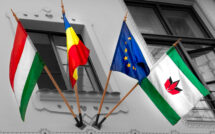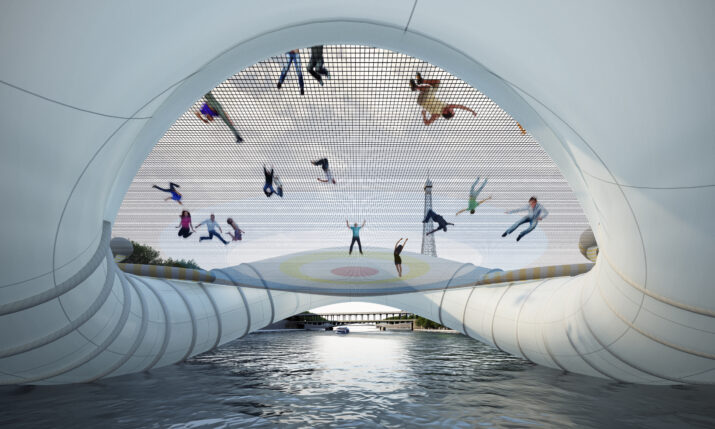
Atelier Zündel Cristea (France) and the collective mmmm (Spain) are brought together in this online exhibition to illustrate how space can be shaped and adapted to trigger opportunities for people to meet in the city and give significance to spaces that otherwise might go unnoticed or be taken for granted—non-places. The installations presented here—Bouncing Bridge, Lily, Divided Street, and BUS—create meaning out of ordinary spaces through the experiences people are able to have there. Whether a structure over a river or a lake, a through street in a neighborhood, or a simple bus stop, these works succeed in attributing meaningfulness to quotidian acts routinely and usually thoughtlessly performed by urban citizens. Through their participation-driven creations, the architects and artists also underscore a key factor common to urban experiences: movement. Crossing over a body of water, getting from point A to point B, whether by foot or public transportation, are activities that highlight the constant flow of city life. The installations, however, also offer a possibility for stillness, whether people wait for the bus, linger behind to interrogate the peculiar street partition and imagine what could be on the other side, or take time to go for a few gravity-defying bounces, all the while inevitably connecting with fellow urban dwellers. Hence, beyond the motivation to offer a light, playful, and enchanted spatial experience, these works embody the will to foster communication and propose a pause. Playing together, asking questions together, wondering and wandering together, and waiting together are all ordinary acts with community-building potential. The ephemeral or permanent transformation of mundane spaces into places with meaning is constitutive of the urban fabric in the long-term and contributes to strengthening people’s attachment to their city as they become part of its history and imagine its future through the ludic experience of place, in ways inescapably reminiscent of Christo’s and Jeanne-Claude’s approach.
—Hélène B. Ducros for EuropeNow
BOUNCING BRIDGE (Paris, France) – by Atelier Zündel Cristea (AZC)
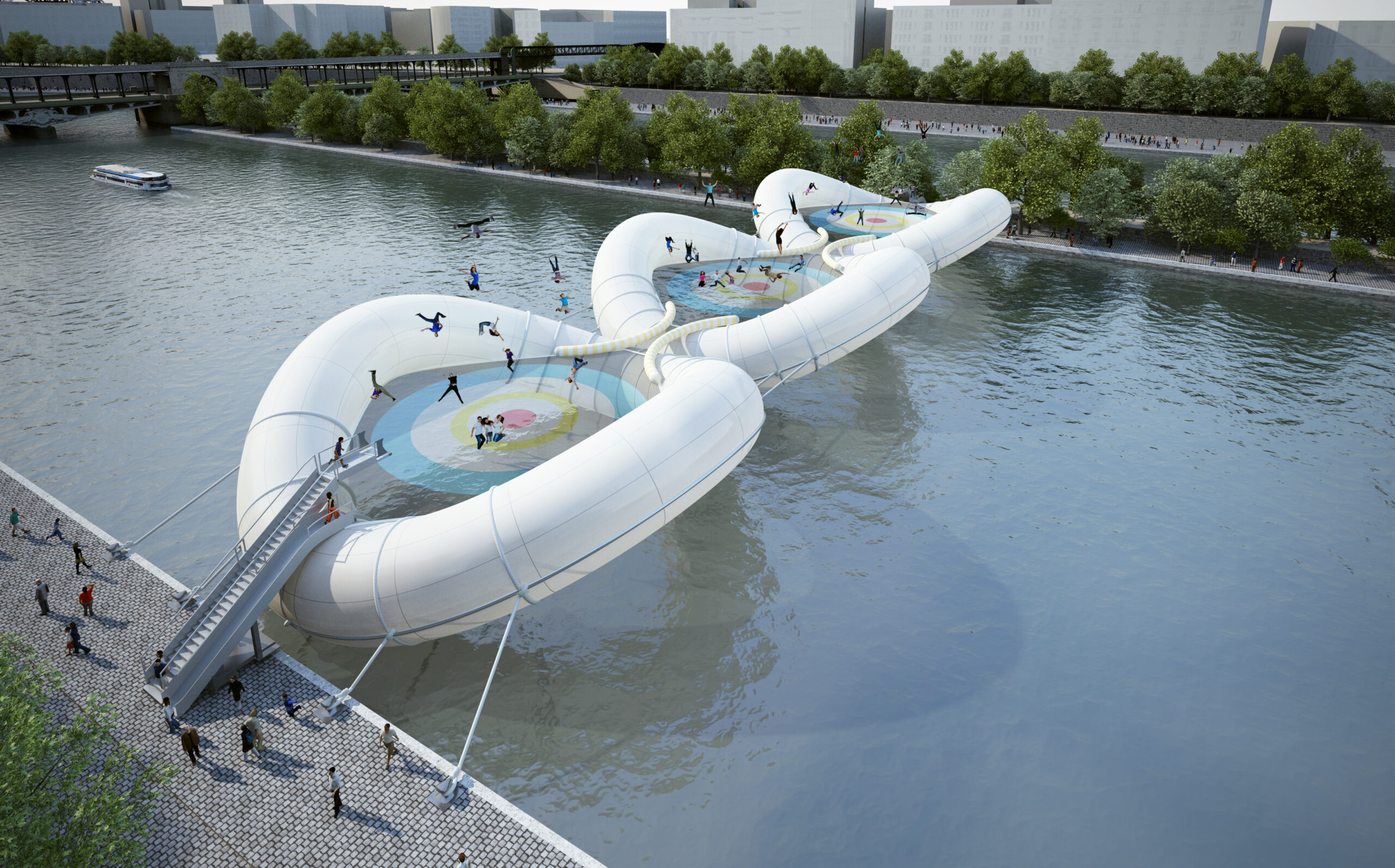
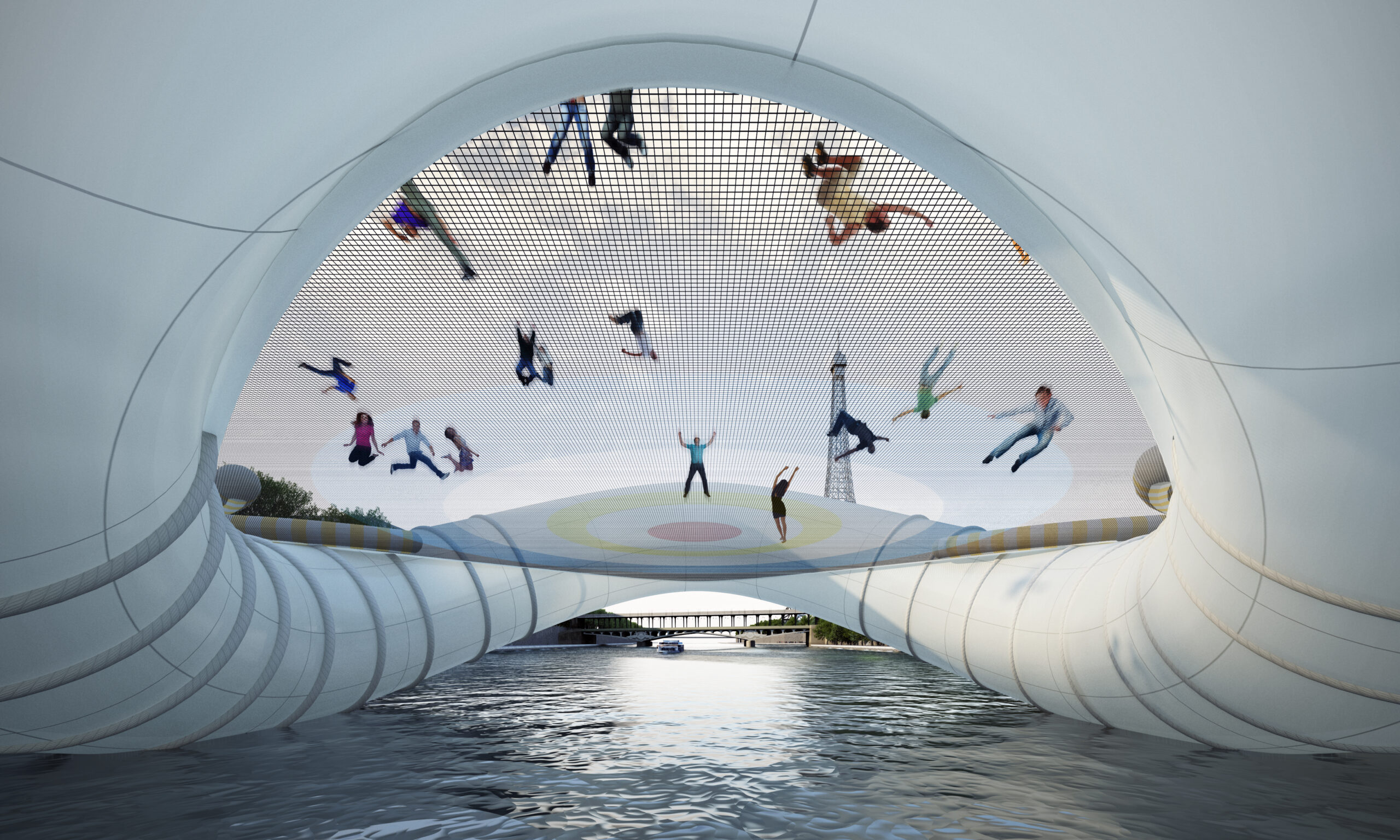
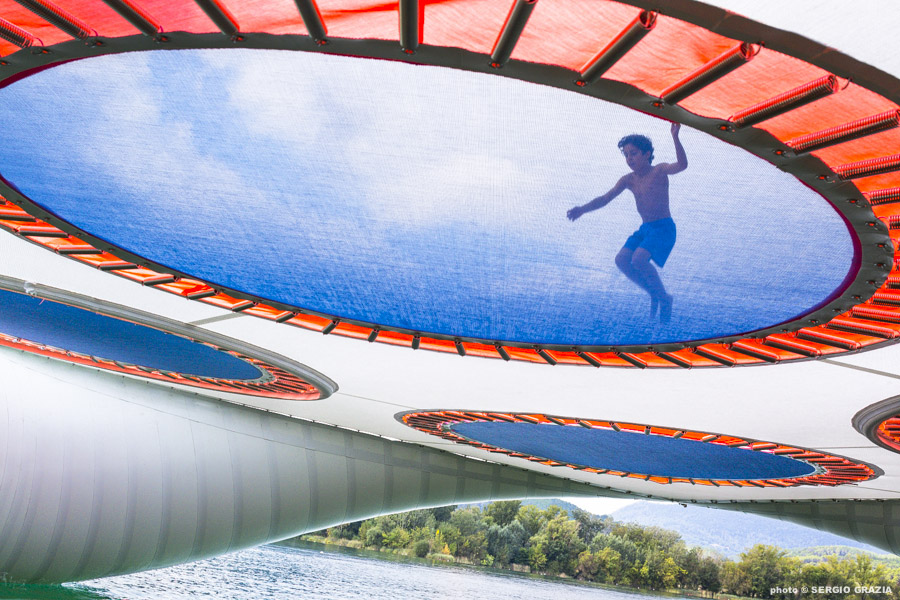
The Bouncing Bridge project (Paris 2012) is a temporary structure that received third place in an international competition for ArchTriumph | Structural studies Ramon Sastre | Construction by TP Architectura I Construccio Textil
Designed to be installed near the Bir-Hakeim Bridge in Paris, the Bouncing Bridge is composed of three inflatable modules: three giant buoys of 30m in diameter. A trampoline made out of netting is stretched over the center of each buoy. The buoys themselves are made of PVC membranes and are assembled with the help of ropes, forming a stable and self-supporting unit. The shape of each module produces a camber similar to an arch. The bridge is about 94m long and necessitates 3700m³ or air volume to fill all modules. Although the bridge has been designed to cross over the Seine River, it could also take on larger or smaller dimensions. The deck uses mainly three lightweight materials: PVC membrane, netting, and air. Ropes secure the set. The project is ephemeral, autonomous, and self-supporting, and it is designed to have a minimal environmental impact. The trampoline provides an easy, fun, and positive activity for the body and the mind. It also helps people gain confidence in themselves and prepares the inner ear, the eyes, and the whole body for unusual sensations. Back flips, spring jumps, falls, all induce a great feeling of freedom.
Irina Cristea and Grégoire Zündel (with Amilcar da Rocha Ferreira) led the project in the competition.
LILY (Poitiers, France) – by Atelier Zündel Cristea (AZC)
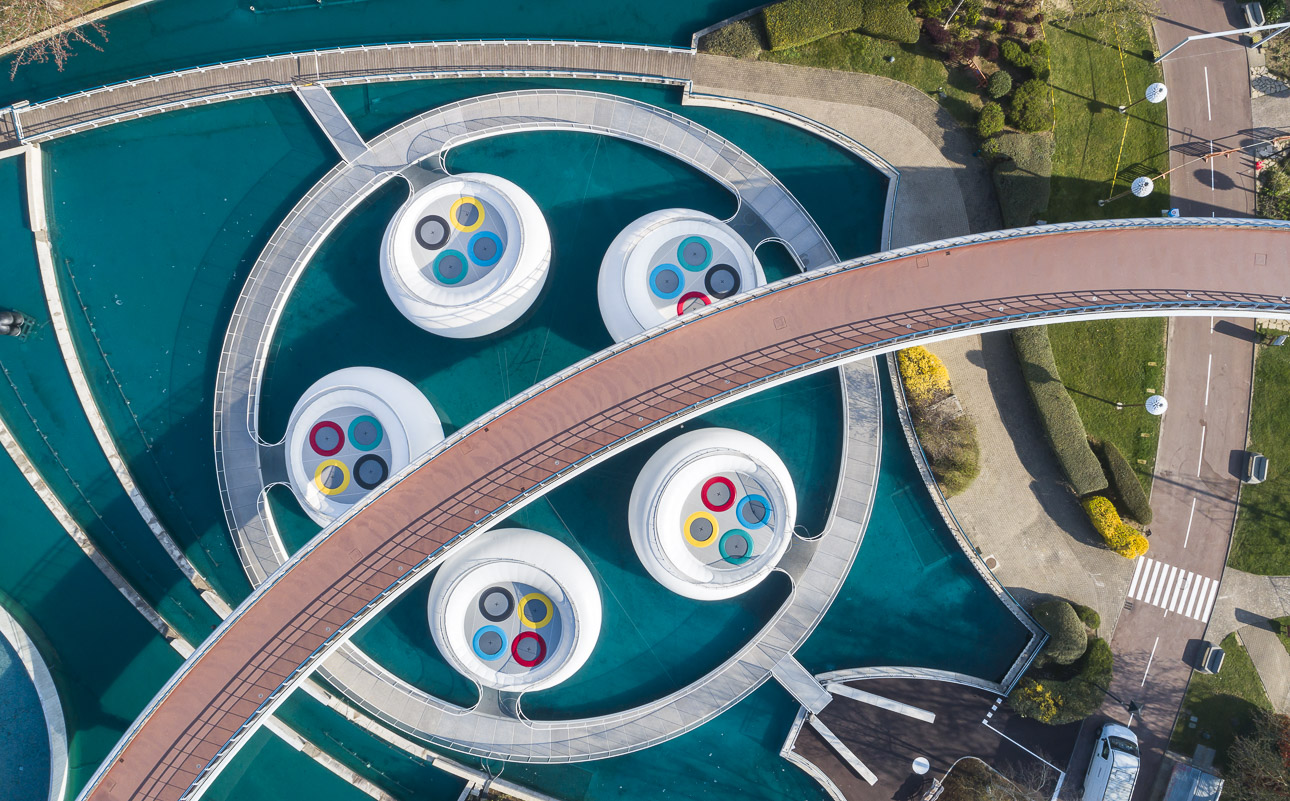
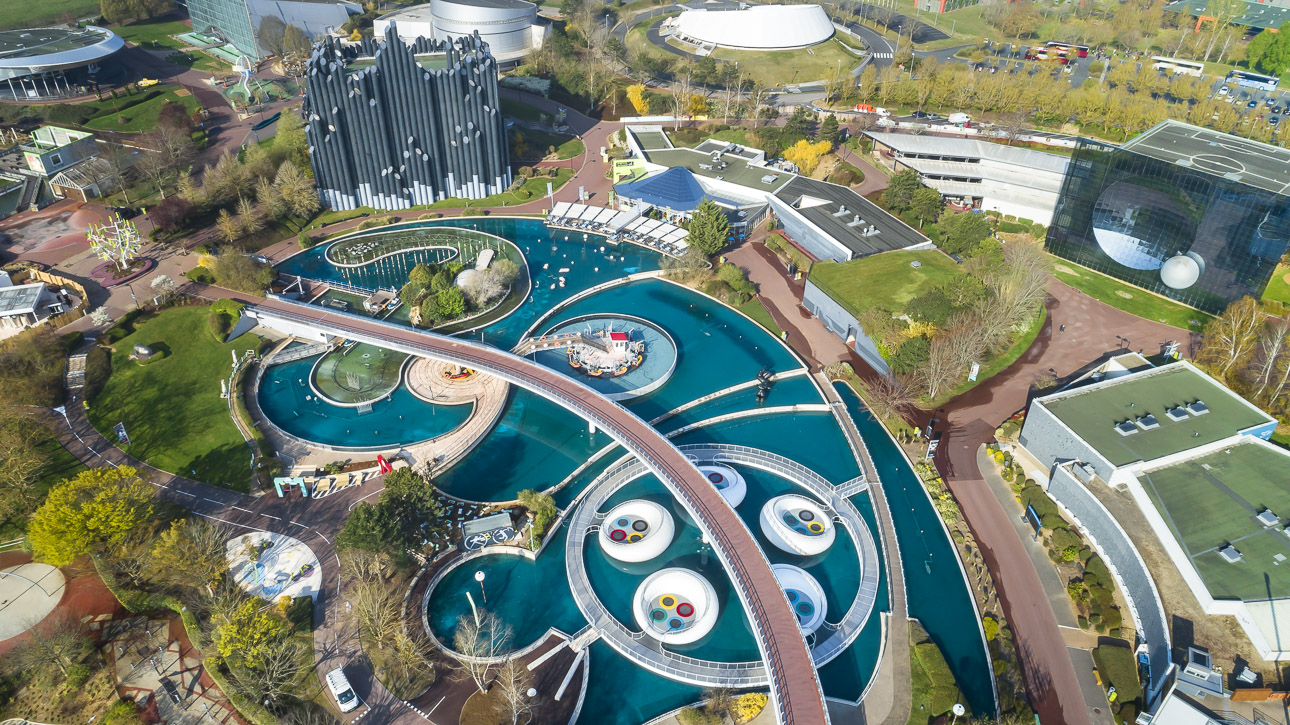

Lily is a structure floating on the central lake of the Futuroscope, near Poitiers, France, which offers a playful and sensorial experience. Installed in 2019, it is composed of five giant buoys moored to a deck measuring 40m in diameter. It consists of 1000m² of canvas, 410m² of braided mesh, and 450m³ of air. The installation is intended for a wide audience and invites different possible uses. For example, people can walk leisurely on the deck, from where they can contemplate the large white shapes and think about how these relate to the water around them. The buoys, on which trampolines have been installed, constitute places of entertainment for those who want to use them to bounce, but they can also become peaceful places for those who prefer to daydream while lying in the sun. The whole structure reacts to people’s spontaneous movements, amplifying people’s joyful spirit as it vibrates in response to their twists and jumps and comes to life through energy transfer. It took 500 hours to design Lily, 1400 hours for its realization, and 1200 hours to assemble it in situ.
‘‘The magic of the water, the unpredictability of movements, and the joy of moving create intense moments during which weightlessness, euphoria, and wonder mingle.”
The BOUNCING BRIDGE project was realized by Atelier Zündel Cristea (AZC). The LILY project was realized by W.A.O. by Grégoire Zündel, Irina Cristea (both associates at Atelier Zündel Cristea), and David Joulin.
Irina Cristea graduated from the Architecture and Urbanism Institute Ion Mincu in Bucarest (Romania) and the Ecole Nationale d’Architecture de Strasbourg. She co-founded Atelier Zündel et Cristea (AZC) in Colmar in 2001 with Grégoire Zündel, before moving to Paris. In 2017, with Grégoire Zündel and David Joulin, she creates the agency W.A.O. (Wild Architectural Objects), which is the product of her wider reflection about the need to foster activities and art in urban spaces through the use of structures that be moved, disassembled, and recycled.
Grégoire Zündel graduated from the l’Ecole Nationale d’Architecture de Strasbourg. He co-founded Atelier Zündel et Cristea (AZC) in Colmar in 2001 with Irina Cristea before moving to Paris. In 2017, with Irina Cristea and David Joulin, he creates the agency W.A.O. (Wild Architectural Objects).
David Joulin created the architectural office “AJC” (with François Chochon), as well as Wild Architectural Object (WAO) and “ADJ” (Atelier David Joulin). He obtained his diploma in architecture from the École Nationale Supérieure d’Architecture de Paris Val de Seine. He has most recently been busy on projects such as the restructuration of the Centre Culturel et Sportif Georges Pompidou in Vincennes, the construction of a regional conservatory in Évreux, a theater in Beauvais, the city museum of Morzine-Avoriaz, and the Laboratoire de la Performance for the French Football Federation in Clairefontaine, among others.
Atelier Zündel et Cristea (AZC) is a multi-purpose agency in architecture. It is effective and creative in responding to diverse contexts and programs, whether urban or suburban, permanent or temporary. AZC has been commissioned to create metro stations, commercial or residential buildings, and university and sport facilities. In trying to answer the specific needs of users, AZC integrates a deep knowledge of urban and suburban dynamics with a concern for durability, functionality, and aesthetics. It has been involved in the realization of permanent projects, as well as temporary installations for special events.
DIVIDED STREET – by mmmm
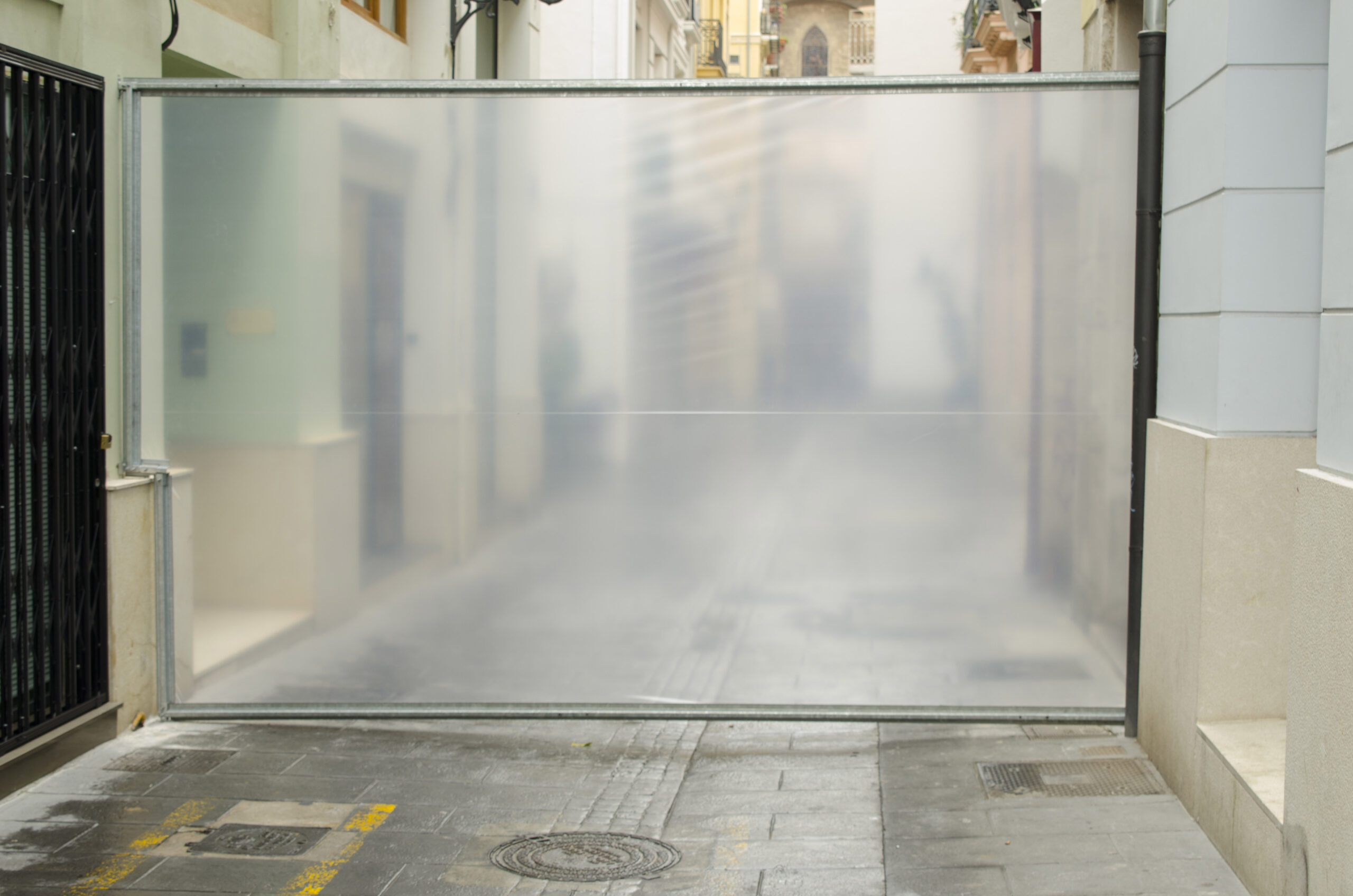
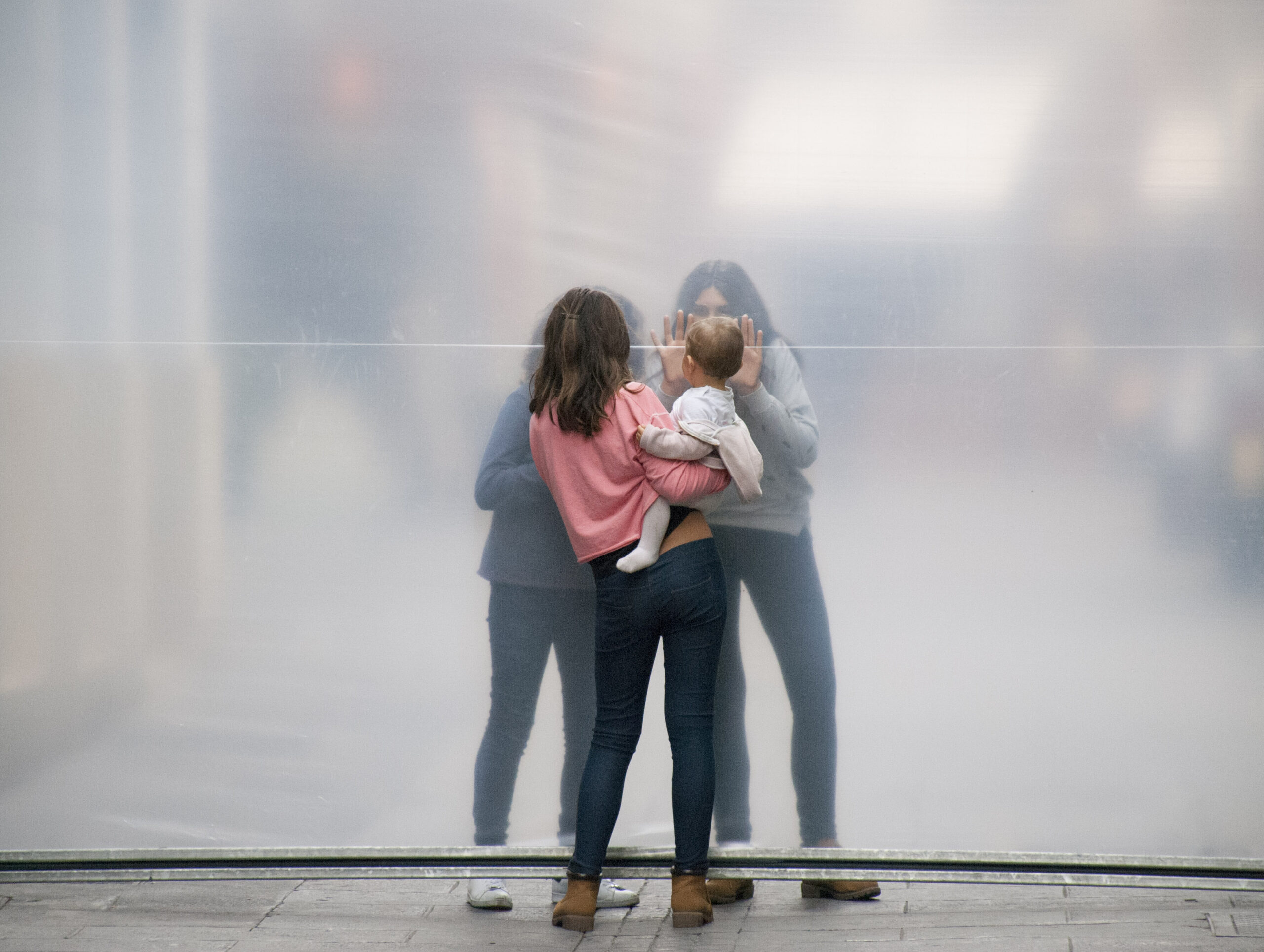
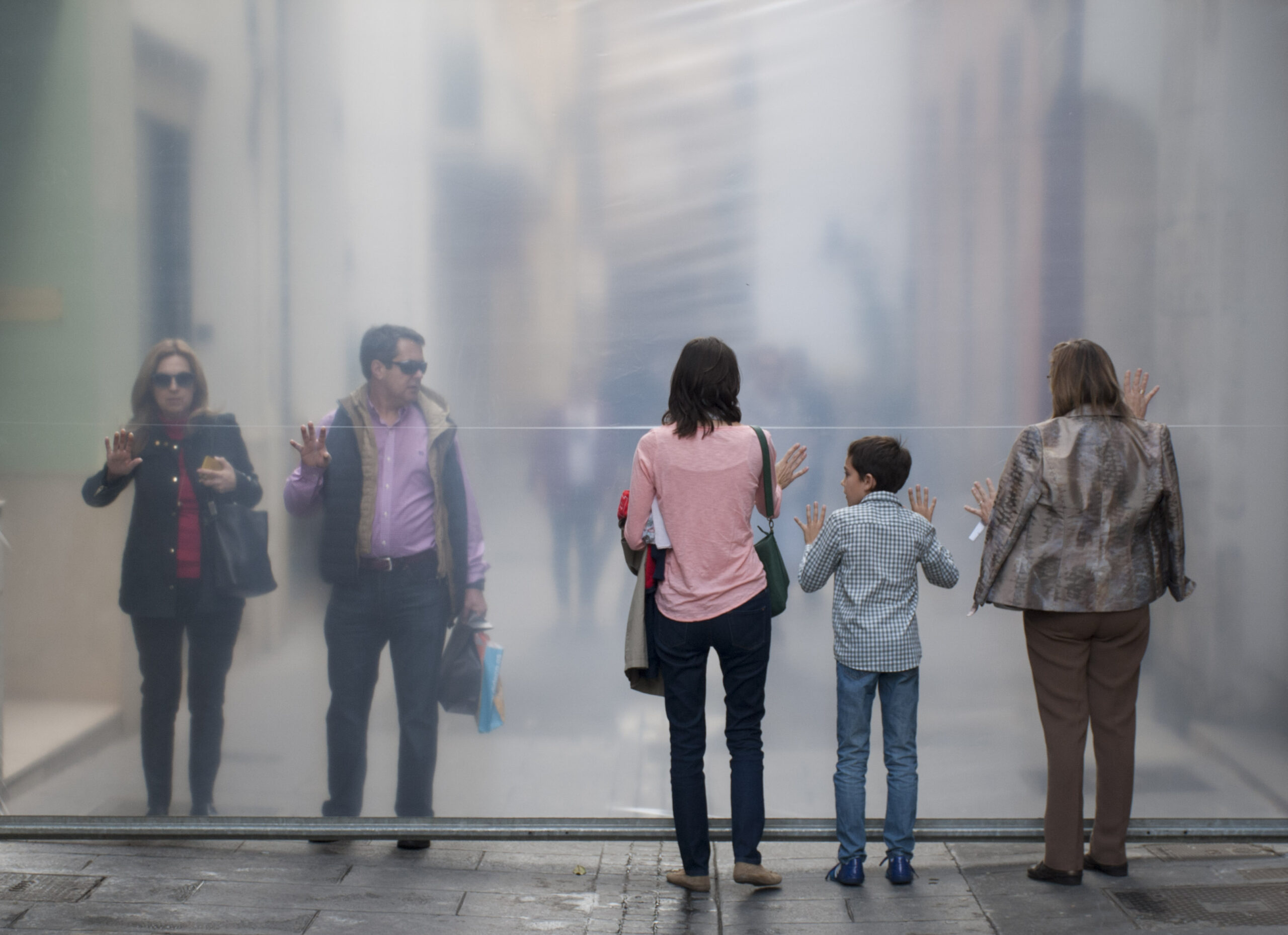
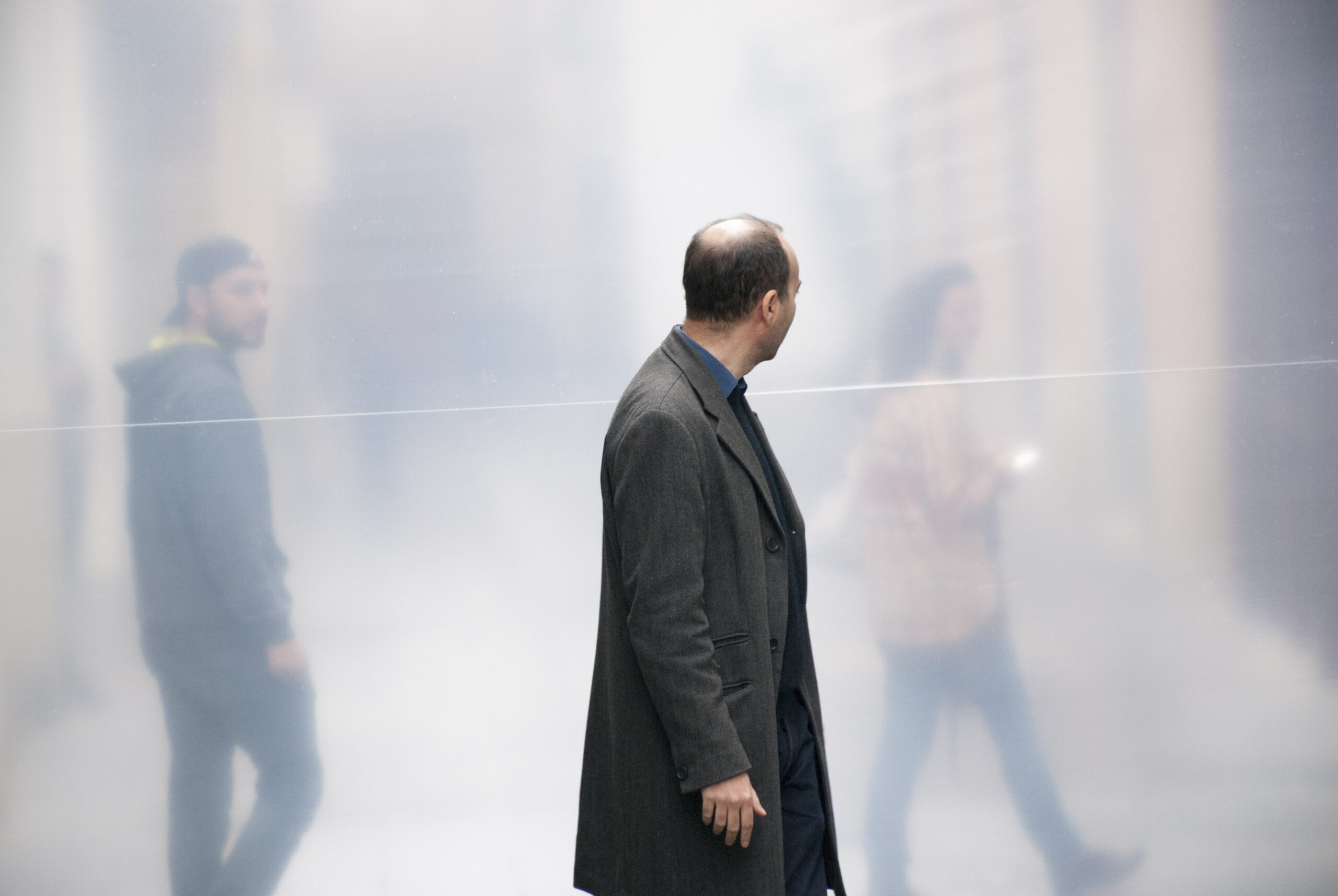
A transparent plastic wall, three meters tall, cuts a pedestrian street into two. You can see what is happening on the other side, but you cannot cross. Standing in front of the stretched plastic wall, passers-by make eye contact with others in the same situation on the other side of the translucent barrier. Some get close to touch the membrane. To get to the other side, you must find alternative routes.
BUS – by mmmm
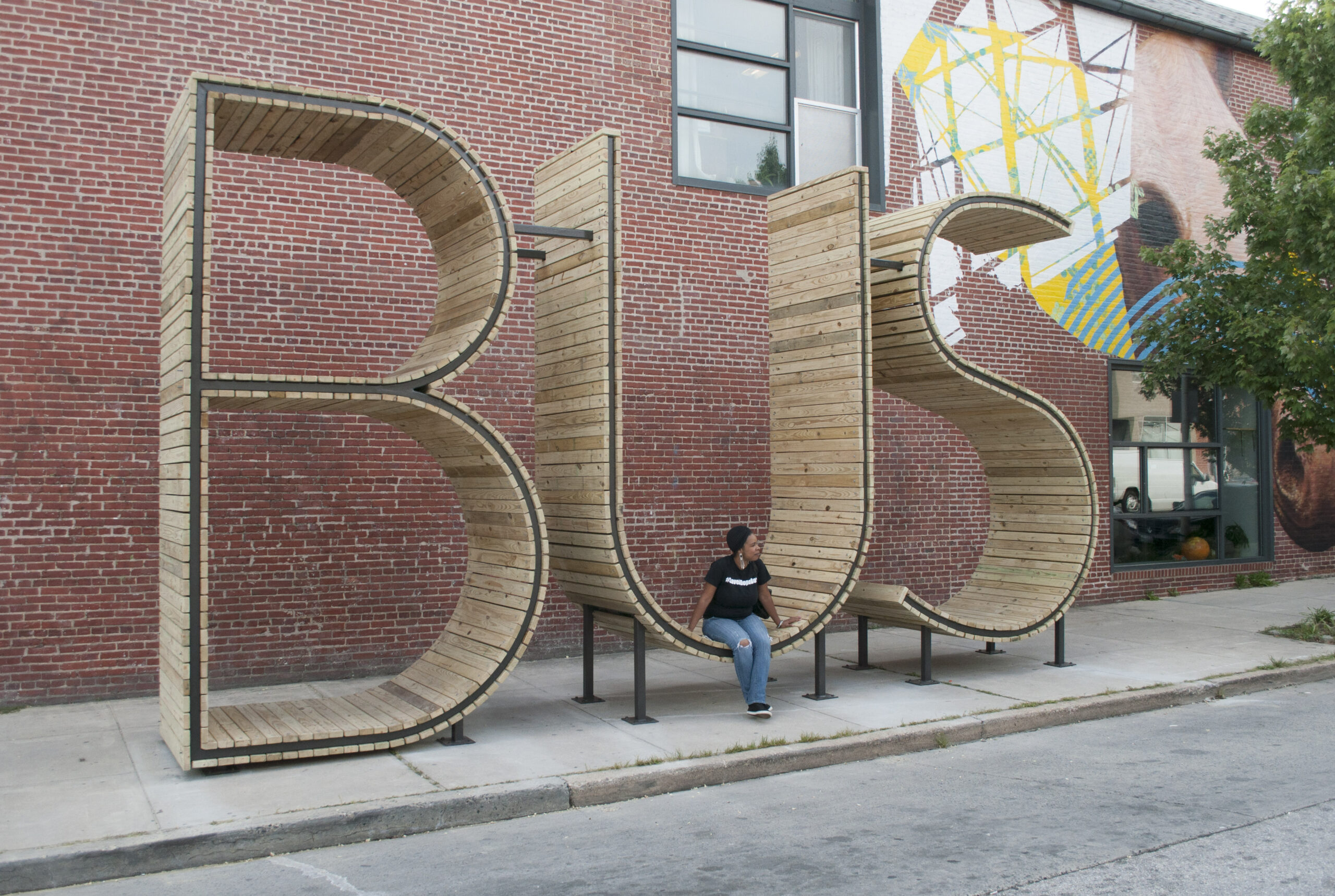
.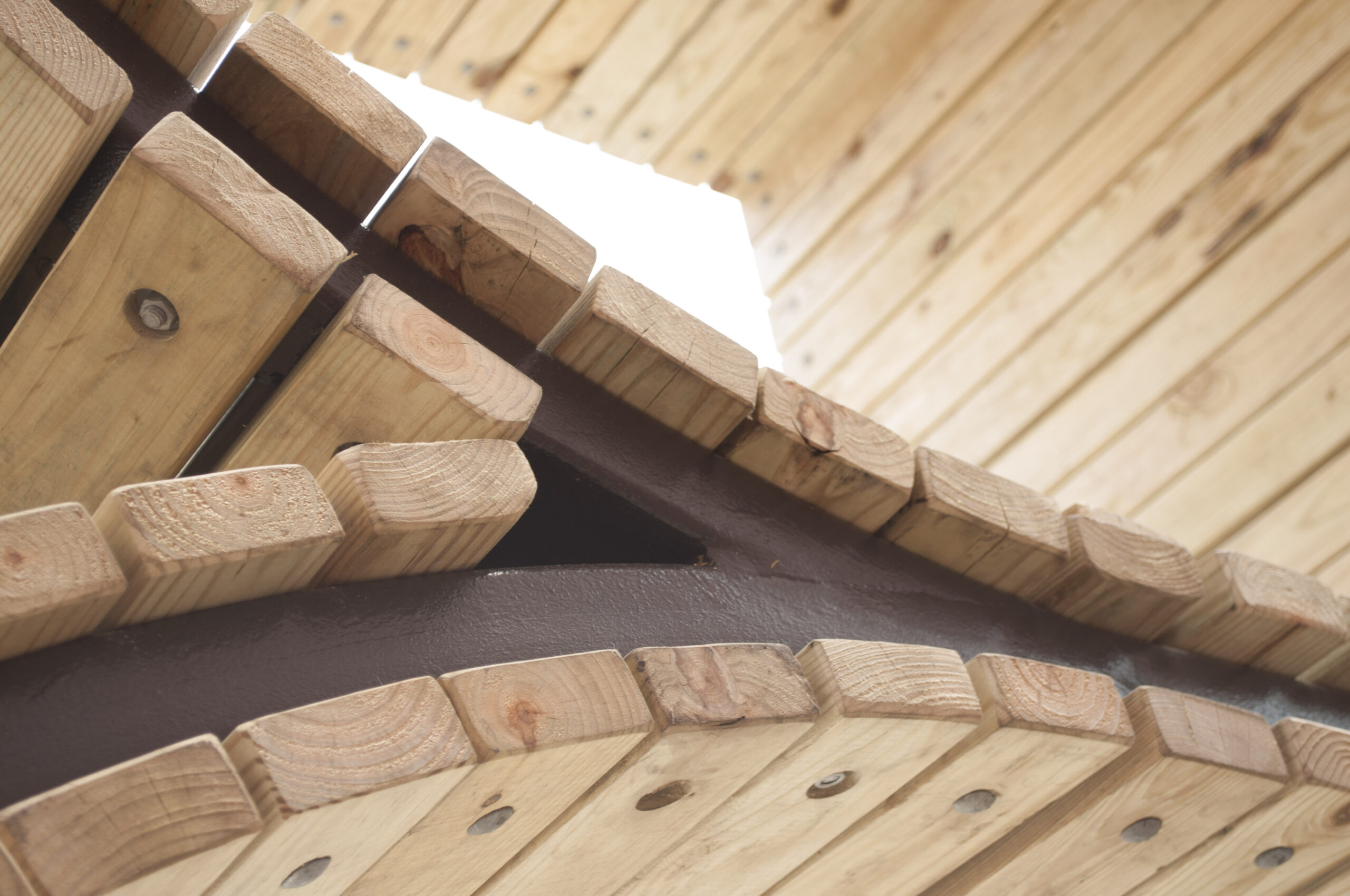
BUS is obviously a bus stop: three large sculptures that form the letters B.U.S. Each letter stands fourteen feet tall and seven feet wide. BUS is a place to enjoy and where people can interact and meet while waiting for the bus. The artists’ goal was to transform a dull experience into entertainment, transforming a bus stop into a leisure space in the middle of the hectic rhythm of the city. BUS is made of wood and steel, materials that are typically used to build urban furniture. The three letters of BUS are big enough to accommodate two to four people each and protect them from rain, sun, wind, and inclement weather. They allow people to assume different postures, as they can sit or stand on the letters. The S allows people to recline back while they wait, and the B provides shelter. The size, shape, and function of BUS make it an iconic urban meeting point. A bus stop you will never miss.
BUS is a permanent public art project supported by Creative Alliance and Southeast Community Development Corporation in conjunction with the Baltimore Office of Promotion and the Arts, the European Union National Institutes for Culture (EUNIC), and SPAIN arts & culture. It is part of the initiative TRANSIT, Creative Placemaking with Europe in Baltimore.
mmmm is a Spanish artist collective composed of Alberto Alarcón, Emilio Alarcón, Ciro Márquez, and Eva Salmerón. Together, they have been creating projects for public spaces since 1998. They specialize in interactive public art and participatory placemaking and their installations can be found in various places in the world. In the US, aside from BUS, mmmm created Meeting Bowls in Times Square in New York City in 2011.
Hélène B. Ducros is the editor of EuropeNow. She holds a Juris Doctor and PhD in human geography, both from the University of North Carolina at Chapel Hill. She has a wide array of research interests focused on heritage-making, placemaking, and the way people relate to the landscape and their lived space. She teaches geography and international studies.
All images with permission of artists and architects.
Published on June 18, 2024.

